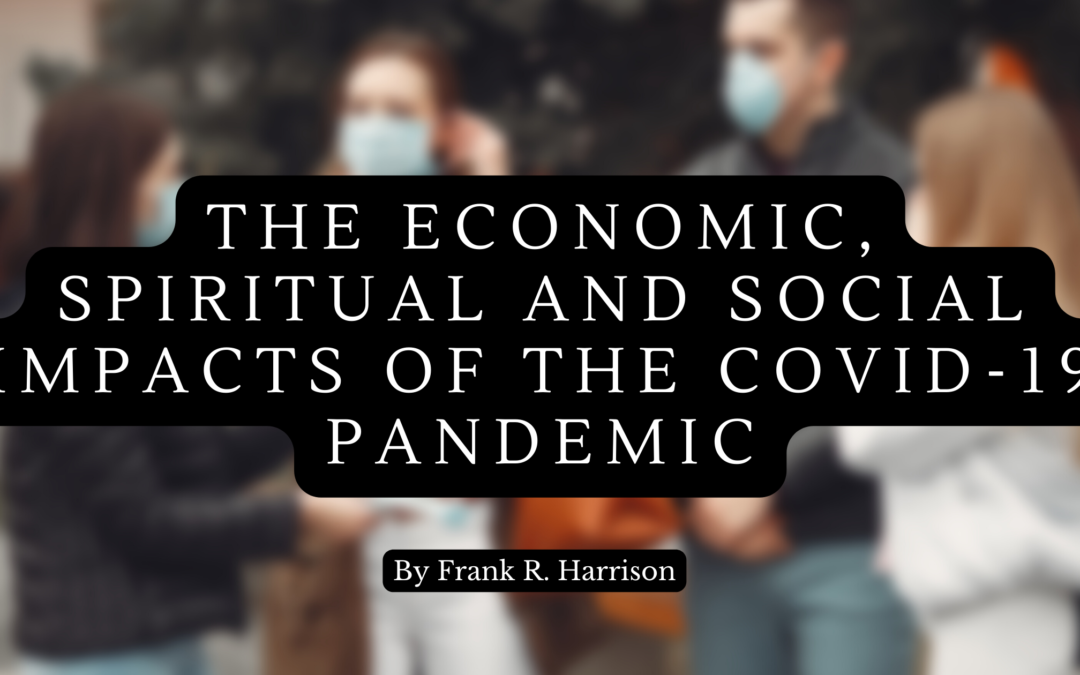At the onset of the COVID-19 pandemic, most of the focus and concern was centered on the physical impact on millions of people as they contracted a novel coronavirus capable of producing mild to severe respiratory trauma.
Now, two years into the pandemic, the physical impact of COVID-19 is all too clear. In the United States alone, nearly one million people have died from the virus and millions more were sickened and fortunately recovered.
However, another physical impact is also playing out. Doctors call it “long COVID.” This denotes an array of ongoing symptoms that impact physical health. That can include persistent coughing, fatigue, shortness of breath, difficulty concentrating, depression, muscle pain, heart problems, and more.
As bad as the physical devastation wrought by COVID, one could argue that the social, spiritual, mental, and economic impacts have produced challenges on par with the physical aspect of the disease.
Social Impact
Because of COVID’s ability to spread rapidly among crowds, government and health authorities implemented policies that included lockdowns, social distancing, masking in public spaces, recommendations to remain as personally isolated from other people as possible, and more.
Such edicts seemed only common sense in the short term, but as the pandemic dragged on, it became increasingly evident that the social impact of lockdowns and isolation was generating negative consequences of its own.
Suddenly, people who were once highly social –- they enjoyed interacting with people at their churches, schools, high school sporting events, social clubs, volunteer programs, and the like –- were confronting a new and unexpected gaping hole in their lifestyles.
People are naturally communal and social beings. That includes one’s spiritual health, activities, and lifestyle.
Mental Health Impact
While health authorities were justified in implementing social isolation measures, they may have underestimated the severe impact that protracted periods of such isolation would produce for millions of people.
The result has been a dramatic increase in cases of depression, anxiety disorder, domestic violence, and even suicide.
As for suicides, the picture is more complicated than one might expect. For example, according to data from the CDC, suicide rates actually declined during the first year of COVID, a 3% decrease overall.
However, suicide rates for specific age groups rose sharply. For example, suicide deaths for males in the age groups of 10-14 years, 15-25 years, and 25-34 years increased.
Another devastating fallout for mental health has been an increase in anxiety. Since the onset of the pandemic, 4 in 10 adults reported and/or sought treatment for anxiety. Before the pandemic, that number was 1 out of 10.
Economic Impacts
The economic impacts of COVID are complicated and difficult to sort out. The first year of the pandemic saw millions of people lose employment and millions of businesses close their doors.
It is also the case that some areas and communities suffered more grave consequences than others. For example, local or regional economies that rely upon the ongoing movement of people suffered some of the worst fallouts. An example would be the economy of Las Vegas, which relies on tourism.
More granularly, COVID necessitated flexibility from certain industries that was unheard of prior to the initial shutdown in March 2020. The primary example of this is working remotely. Because of the uncertainty surrounding the pandemic and the risk of severe illness, many organizations had to switch to a remote model overnight—a feat that was more easily accomplished for some companies than others.
By and large, this disruption in routine may have been a welcomed change for some professionals, and the corporate world is slowly changing to accommodate that preference. However, some organizations have pushed the notion of “returning to normal,” which has been met with resistance—as proven by the Great Resignation that swept the workforce in the latter half of 2021. Employees have realized the power they have in encouraging change, especially as it relates to pay rates, paid flexibility that enables them to care for their families, and work from home opportunities.
Conclusion
Overall, the COVID-19 pandemic has altered the way human beings lead nearly every facet of their lives. As cases and community transmission continue to wane, restrictions are eased, and individuals become more comfortable with finding a more sustainable “new normal,” it will be interesting to see how the landscape of our world will continue to change.

